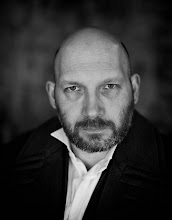
Night of the Eagle (1962). Directed by Sidney Hayers. Starring Peter Wyngarde, Janet Blair, Margaret Johnston
Adapted from Fritz Leiber’s novel Conjure Wife, Night of the Eagle aka Burn Witch Burn is an effective little chiller that bears comparison with Jacques Tournier’s magnificent Night of the Demon (so much so that its UK title can hardly be an accident).
Like Night of the Demon, Night of the Eagle is a story of supernatural doings and black magic set against a genteel English background and like Tournier’s film is high on atmosphere, low on action (although pacey and never dull) and with a literate intelligent script that steadfastly refuses to do anything other than take its subject matter seriously.
That the script is intelligent is hardly surprising given Leiber’s source material and the involvement of Richard Matheson and Charles Beaumont (who share scripting duties with George Baxt) two writers who knew how to deliver clever, slightly off-kilter horror.
Professor Norman Taylor (Peter Wyngarde) is a rational – perhaps too rational – man who lectures his students in the study of reason and rationality while continually scoffing at the supernatural. However, his life turns upside down when he discovers that his beloved wife Tansy (Janet Blair) has been dabbling with witchcraft and, worse, that she is convinced that his continued good fortune is due to her various charms and spells.
After forcing Tansy to burn the charms and gewgaws she has dotted around their house, Professor Taylor finds that things take a rapid turn for the worse – mummified spiders come back to life, he is accused of rape by one of his students and a tape recording of one of his lectures appears to act as a beacon for, well, something mysterious and deadly one stormy night.
Eventually, even Mrs. Tansy Taylor succumbs to the various dark forces all around them, leading Professor Norman even deeper into a dark, mysterious and deadly world and a confrontation with supernatural forces that makes him realise that, after all, there may be something to this witchcraft business.
An out and out fantasy on many levels – this is a world where even a humble university Professor drives a rather spiffy sports car, lives in a surprisingly spacious and tastefully decorated mock Tudor home and can afford a coastal pied-a-terre where his wife can commune with dark forces – Night of the Eagle has a claustrophobic, noirish quality, best typified by Wyngarde’s performance, who at times seems to be channelling the spirit of Ralph Meeker’s Mike Hammer in Kiss Me Deadly, all tightly wound rage and sharp suits, as well as in Sidney Hayer’s moody direction.
With some genuinely unsettling use of sound, an exciting supernatural climax that sees Wyngarde chased through his university by a stone eagle brought to murderous life (again recalling the climax of Night of the Demon) and a surprising denouement that wraps the whole thing up rather neatly, Night of the Eagle is an engrossing eighty or so minutes of taut, yet subtle horror that, in some ways - particularly with its collision of the mundane and the supernatural – prefigures such later movies as Rosemary’s Baby or The Omen.
The performances are top-notch, particularly Margaret Johnston’s creepy turn as Flora Carr, and Peter Wyngarde himself who’s journey from annoyed sceptic to terrified believer is beautifully handled by both star and director.
Although a fairly minor entry in the British horror canon, Night of the Eagle deserves to be right up there with other low-key shockers like Horror Hotel or The Damned.
Intelligent, absorbing and well made.
What more could you ask?










